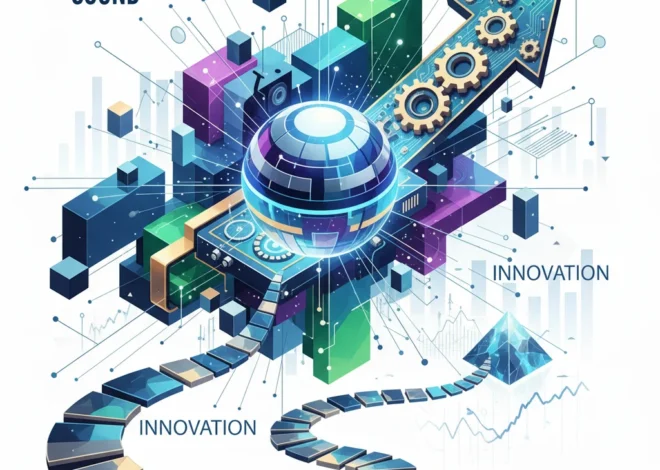
Beyond the Firewall: Why the UK’s Top Cyber Agency is Putting Your CEO on Notice
Let’s be honest. For years, cybersecurity was the department you only heard from when you clicked a suspicious link or forgot your password. It was a cost center, a necessary evil, a problem for the IT team to handle. But that era is officially over. A stark warning has been issued, not to your Head of IT, but directly to your CEO.
The UK’s National Cyber Security Centre (NCSC), a part of GCHQ, has put business leaders on notice. Following a devastating series of cyber-attacks on major UK institutions like the British Library and outsourcing firm Capita, the message is clear: preparing for online attacks is no longer an IT task; it’s a fundamental leadership responsibility. Lindy Cameron, the NCSC’s chief executive, stated that it is “vital” for leaders to take cyber resilience seriously, emphasizing that the question is not *if* you’ll be attacked, but *when*.
This isn’t just another headline. It’s a seismic shift in how we must approach security in a world built on software, cloud infrastructure, and increasingly, artificial intelligence. For developers, entrepreneurs, and tech professionals, this is a critical moment. It’s time to move the conversation from firewalls and antivirus software to business continuity and operational resilience. It’s time to talk about what happens *after* the breach.
The New Battlefield: From Server Room to Boardroom
The recent attacks weren’t just technical glitches; they were business catastrophes. The ransomware attack on the British Library didn’t just take down a website; it crippled its operations, from ticketing to public access to its priceless collection, with a recovery cost estimated at up to £7m (source). When Capita was breached, it wasn’t just data that was exposed; pension data administered by the company was compromised, eroding public trust and triggering regulatory nightmares.
These incidents highlight a crucial truth: cyber risk is business risk. A successful attack can halt production, destroy customer trust, violate data protection laws, and wipe millions off a company’s valuation. This is why the NCSC’s warning is aimed at the C-suite. The decisions that determine a company’s ability to survive an attack—budget allocation, strategic priorities, risk appetite, and company culture—are made in the boardroom, not the server room.
For startups and tech companies, the stakes are even higher. Your entire business is often built on digital assets, intellectual property, and customer data hosted in the cloud. A single, poorly handled incident can be an extinction-level event. This is where we must understand the crucial difference between two often-confused terms: cybersecurity and cyber resilience.
Cybersecurity vs. Cyber Resilience: Are You Building Walls or a B-52?
For decades, the focus of “cybersecurity” has been on prevention. We build taller walls, stronger gates, and more complex locks. Think firewalls, antivirus, and access controls. This is the “keep the bad guys out” approach. It’s essential, but it’s no longer sufficient.
Cyber resilience, on the other hand, operates on the assumption that your defenses *will* eventually be breached. It’s not about building an impenetrable fortress; it’s about building a B-52 bomber—a complex system designed to withstand significant damage and still complete its mission. It’s about your ability to anticipate, withstand, recover from, and adapt to adverse conditions, stresses, attacks, or compromises.
Here’s a breakdown of the shift in mindset:
| Aspect | Traditional Cybersecurity (The Fortress) | Modern Cyber Resilience (The B-52) |
|---|---|---|
| Primary Goal | Prevent breaches at all costs. | Ensure business continuity during and after a breach. |
| Core Mindset | “If we get breached, we have failed.” | “When we get breached, how quickly can we recover?” |
| Key Activities | Perimeter defense, access control, vulnerability scanning. | Incident response planning, disaster recovery drills, threat hunting, rapid detection. |
| Technology Focus | Firewalls, antivirus, intrusion prevention systems. | Endpoint Detection & Response (EDR), Security Orchestration, Automation, and Response (SOAR), AI-driven analytics. |
| Success Metric | Number of blocked attacks. Zero incidents. | Mean Time to Detect (MTTD) and Mean Time to Respond (MTTR). Minimized business impact. |
This shift is fundamental for any organization, from a fledgling startup to a global enterprise. Your programming and software development lifecycle must evolve, embedding security checks and resilience thinking from the very first line of code.
Looking ahead, the next frontier is the inevitable arms race in artificial intelligence. We’re already seeing AI-powered phishing and malware creation. The only viable defense against AI-driven attacks will be AI-driven defense. This puts an immense pressure on innovation, requiring us to build smarter, more automated systems that can detect and respond at machine speed. The companies that thrive won’t just be the ones with the best products, but the ones that can adapt and recover the fastest. Resilience is the new competitive advantage.
The Modern Tech Stack: A Double-Edged Sword
The very tools that fuel today’s innovation—cloud computing, SaaS platforms, and automation—also create a vastly more complex attack surface. The old concept of a secure corporate “perimeter” is a relic. Your data is no longer in a single, well-guarded castle; it’s distributed across countless SaaS applications, cloud servers, and employee devices around the globe.
Cloud and SaaS: The Perimeter is Dead
For startups especially, the cloud is a miracle. It provides instant scale and access to powerful tools without massive upfront investment. But it also introduces shared responsibility. Your cloud provider secures the infrastructure, but you are responsible for securing your data, applications, and configurations within it. A single misconfigured S3 bucket can expose the data of millions. A compromised API key for a critical SaaS tool can hand attackers the keys to your kingdom. Resilience here means continuous monitoring, strict identity and access management, and having a plan to operate if a key SaaS provider goes down.
Software and Automation: Speed vs. Security
The pressure to innovate and ship features quickly is immense. Methodologies like DevOps and CI/CD have accelerated programming and deployment cycles to an incredible degree. But without proper security integration (DevSecOps), this speed becomes a liability. We’re automating the deployment of not just features, but also vulnerabilities. True resilience requires baking security into every step of the software development lifecycle. This includes static and dynamic code analysis, dependency scanning, and automated security testing in the pipeline. It’s about empowering developers with the tools and knowledge to be the first line of defense.
Wielding AI and Machine Learning for Proactive Defense
While attackers are leveraging automation and AI, so can we. The sheer volume of data and alerts in any modern IT environment is impossible for humans to manage alone. This is where artificial intelligence and machine learning are becoming indispensable tools for building a resilient security posture.
- Anomaly Detection: Machine learning models can establish a baseline of “normal” activity on your network, in your cloud environment, or within your applications. They can then instantly flag deviations that could signal a compromise, long before a human analyst would notice.
- Predictive Threat Intelligence: AI can analyze vast datasets of global threat information to identify emerging attack patterns and predict which vulnerabilities are most likely to be exploited next, allowing teams to prioritize patching and defensive measures.
- Automated Incident Response: When a threat is detected, every second counts. AI-powered Security Orchestration, Automation, and Response (SOAR) platforms can automate the initial response—quarantining an infected device, blocking a malicious IP address, or revoking compromised credentials—in milliseconds. This dramatically reduces the “dwell time” an attacker has inside your network, limiting the potential damage.
Integrating AI isn’t a silver bullet, but it is a powerful force multiplier. It allows your human experts to focus on high-level strategic tasks and complex threat hunting, rather than being buried under a mountain of low-level alerts.
An Actionable Playbook for the Modern Leader and Technologist
So, what should you do? The NCSC’s guidance isn’t just a warning; it’s a call to action. Here’s how different roles can step up:
For the CEO, Entrepreneur, or Startup Founder:
- Lead from the Front: Champion cyber resilience as a core business value. Discuss it in board meetings, all-hands meetings, and with investors. Your engagement sets the tone for the entire organization.
- Ask the Right Questions: You don’t need to be a technical expert, but you need to be an informed one. Ask your team: “What is our plan for a major ransomware attack? How quickly can we restore critical systems from backups? Have we tested this plan?”
- Fund the Foundation: Resilience isn’t free. It requires investment in technology, people, and processes. Allocate a realistic budget that treats security as an enabler of innovation, not a blocker. According to the NCSC, planning for an incident is a “sound investment” that pays off when a crisis hits (source).
For the CTO, Developer, and Tech Team:
- Assume Breach: Design your systems with the assumption that they will be compromised. Implement network segmentation, the principle of least privilege, and zero-trust architecture to limit the “blast radius” of an attack.
- Practice, Practice, Practice: An incident response plan that sits on a shelf is useless. Run regular drills and tabletop exercises. Simulate a ransomware attack or a data breach. Identify the weaknesses in your process *before* a real crisis forces you to.
- Embrace DevSecOps: Integrate security into your development workflow. Use automation to scan code, containers, and cloud configurations for vulnerabilities before they ever reach production. Make security a shared responsibility for the entire engineering team.
The Resilient Future
The message from the UK’s top cyber agency is an inflection point. For years, we’ve celebrated disruption and rapid growth, sometimes at the expense of a robust and resilient foundation. The era of “move fast and break things” must now be replaced with “move fast and build resiliently.”
Cyber resilience is no longer a technical problem to be solved; it is a business strategy to be embraced. It’s about ensuring that when the inevitable digital storm hits, your organization doesn’t just survive—it adapts, recovers, and emerges stronger. The leaders and companies that understand this will be the ones who define the future of innovation.

